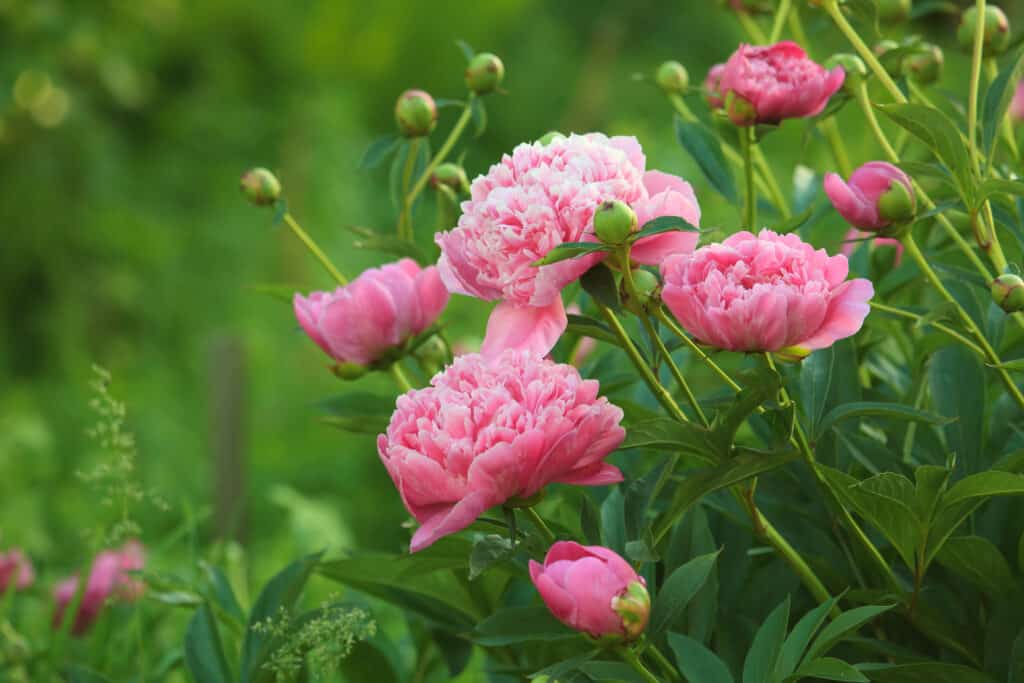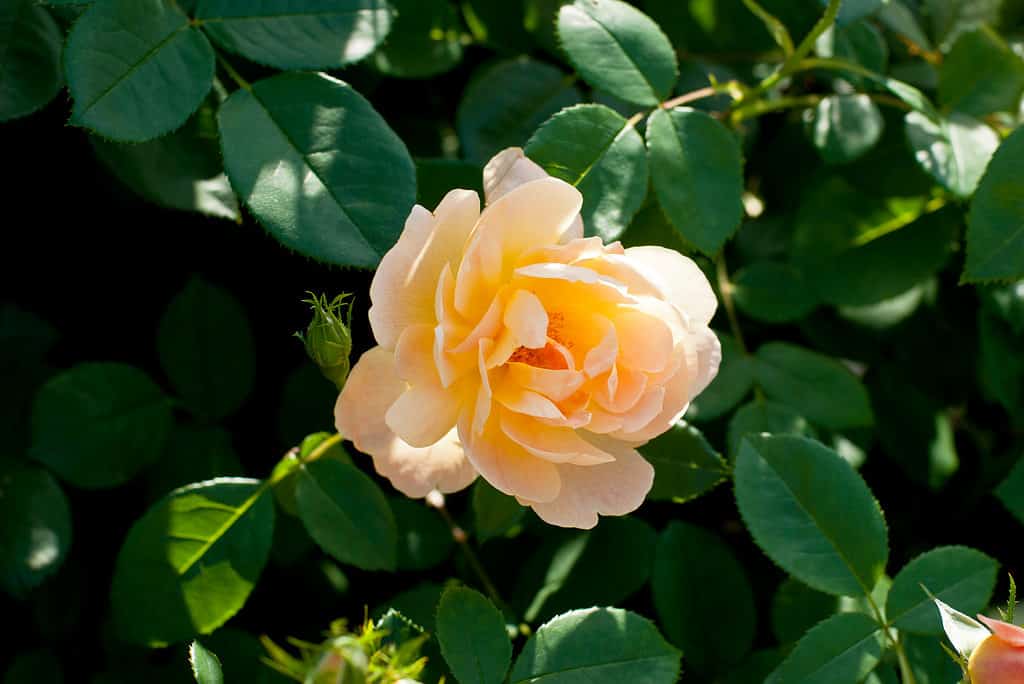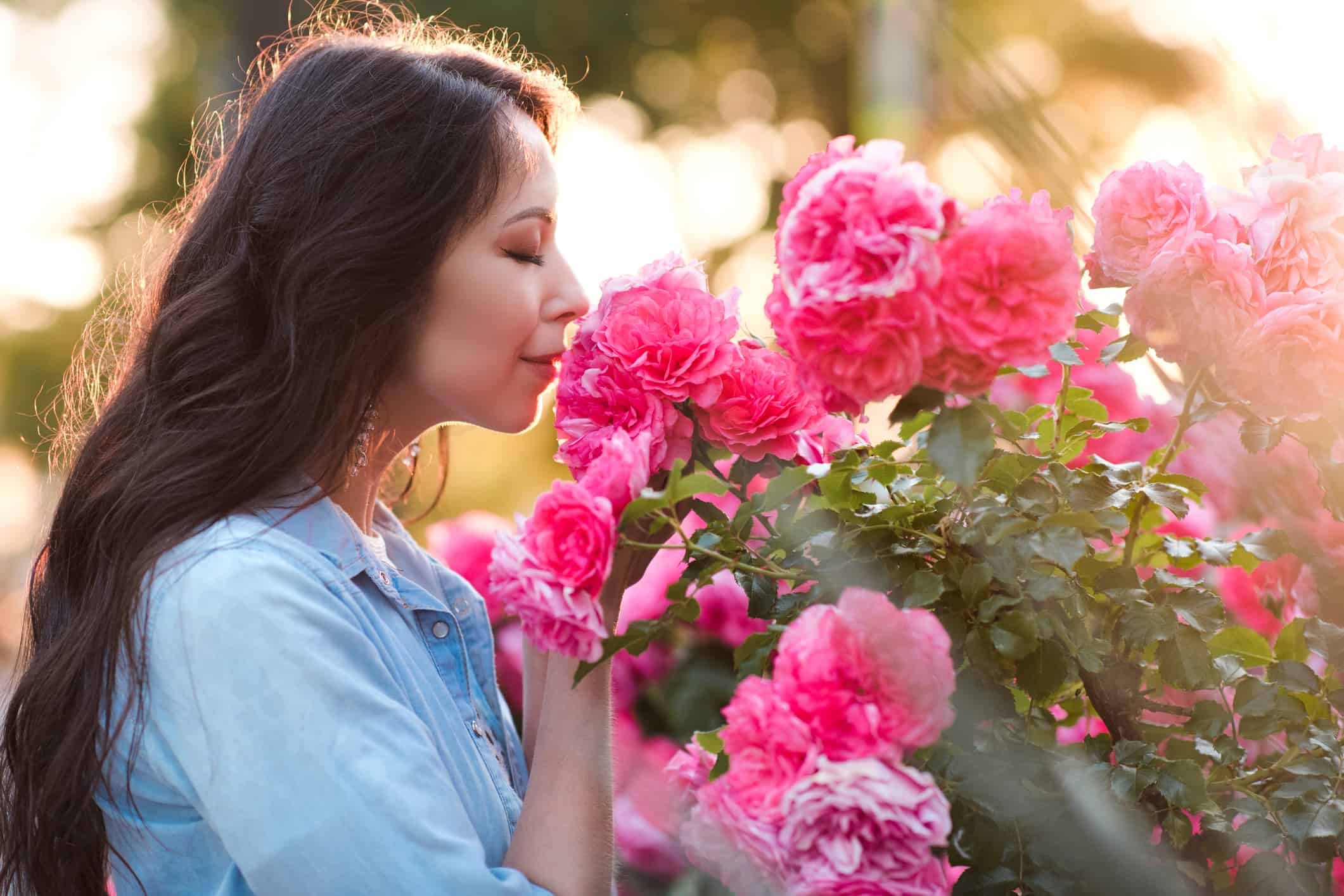Choosing the perfect plant for your garden can be tough. There are so many varieties and colors to pick from! And some of them look very similar, making the decision even harder. For example, ‘The Ingenious Mr. Fairchild’ garden rose, and the ‘Dr. Alexander Fleming’ peony have nearly identical pink flowers. Even experienced gardeners can barely tell the blooms apart!
Today we will examine the differences and similarities between garden roses and peonies to help you make the best choice for your garden. Let’s get started!
Comparing Roses to Peonies
Garden roses are a type of flower, classified as a species of the genus Rosa, often grown for ornamental purposes. They have large blooms with colors ranging across the entire color spectrum, from white to deep red and every color in between. They come in many varieties, such as hybrid tea roses, floribunda roses, shrub roses, and climbing roses. Garden roses require full sun and well-drained soil for optimal growth but will also tolerate partial shade.
Peonies are flowering plants native to Asia and Europe but have been cultivated around the world since ancient times. The full flowers come in shades of pink, white, or red, with some having double or even triple layers of petals. These luscious blooms make them extremely attractive in bouquets or planted garden beds. Peonies prefer cool climates with plenty of sunlight and moist but well-drained soils. They can survive temperatures down to -22°F.
| Characteristic | Peony | Rose |
|---|---|---|
| Genus | Paeonia | Rosa |
| Average Petal Count | 40-50 | 20-25 |
| Bloom Time | April or May (or until frost) | From May to June |
| Stem Length | 20-24 inches | 18-19 inches |
| Flower Color | Pink and white are common. Purple, red, orange, and yellow are less common. | All colors except true blue |
| Cost | More expensive because they are seasonal | Less expensive because they are grown in greenhouses all year |
| Scent | Mild floral scent | Strong scent is floral, sweet, spice, tea, citrus, myrrh, jasmine, or fruit. |
| Lifespan | 20 years | Between five to 50 years |
| USDA Hardiness Zone | Zones 2-8 | Zones 5-9 (rarely 10 and 11) |
| Sunlight | Full sun, six hours or more daily | Full sun, six hours or more daily |
| Soil | Well-drained, humus rich. pH 6-7.5 | Well-drained, humus rich. pH 6-7.5 |
| Prune | Prune in fall after frost and after finished growing | Prune in early spring before new growth |
| Fertilize | Fertilize twice; before blooms start and after blooms finish | Fertilize every two weeks during growing season |
| Edible | yes | yes |
| Thorns | No | Yes |
| Plant Height | 2.5 to 4.5 feet | 8 inches to 50 feet. Average 4-5 feet |
Key Differences between Garden Roses and Peonies
Garden roses are often called peony roses and cabbage roses because their blooms look so much like the fluffy, ruffly peony. But there are quite a few differences. The key differences between garden roses and peonies are the number of petals, bloom time, and cost.
1. Petal Count

Garden roses tend to be larger in size than their wild counterparts, while still maintaining their characteristic softness and beauty.
©Molly Shannon/Shutterstock.com
When comparing the petal count of peonies and roses, there are both differences and similarities. Garden roses typically have fewer petals than peonies, with a range between 20-25 petals per bloom compared to 40-50 for the average peony bloom.
In terms of similarities, both rose and peony blooms feature densely packed petals that form an outward-facing cup shape when fully open. Garden roses tend to be larger in size than their wild counterparts, while still maintaining their characteristic softness and beauty. Peonies can also come in various sizes, from very small to large, depending on the variety and cultivar.
2. Bloom Time

Peonies generally won’t begin blooming until mid-May, often lasting into late June.
©iStock.com/Birute
Garden roses and peonies differ in terms of bloom timing. Garden roses are typically earlier to bloom than peonies, with blooms appearing as early as late April or May, depending on the region. They will typically continue to produce flowers until frost. Some rose bushes will bloom for four months straight if continually deadheaded!
Peonies generally won’t begin blooming until mid-May, often lasting into late June. They are not repeating bloomers, and deadheading does not produce additional flowers for the current season. While some garden rose varieties have been bred specifically for long flowering periods and repeat flushes of blooms, this cannot be said for most peony cultivars.
3. Cost

If you’re looking for value for money in your floral purchases, then opting for garden roses instead of peonies could save in the long run.
©kidae/Shutterstock.com
The difference in price between these two flowers can be quite substantial. Generally speaking, when comparing these two particular flowers at the same size and quality level, peonies tend to cost more than garden roses. This is primarily due to the fact that they are not as common as roses.
Peonies are also known for having shorter blooming periods than other flower varieties, thus forcing florists to pay higher prices for freshness. If you’re looking for value for money in your floral purchases, then opting for garden roses instead of peonies could save in the long run.
4. Scent

Roses have a strong and sweet scent that is often described as containing hints of fruit or spices.
©iStock.com/morrowlight
Garden roses and peonies are two of the most popular flowers for bouquets, but they have very different scents. Garden roses have a strong and sweet scent that is often described as containing hints of fruit or spices. Some roses smell like tea or myrrh, and some smell heavily floral.
Peony’s scent is much more subtle, with a light, slightly floral or citrusy aroma. While both varieties can fill a room with their unique fragrances, garden roses tend to linger in the air longer than peonies due to their stronger smell.
5. Lifespan

Modern hybrid roses typically have lifespans of up to five to seven years, while some heirloom roses are known to live over 50 years.
©Kristine Rad/Shutterstock.com
Garden roses and peonies have a few similarities when it comes to lifespan. Both are considered long-lived plants!
Modern hybrid roses typically have lifespans of up to five to seven years, while some heirloom roses are known to live over 50 years. Peonies can live for two decades if they’re well cared for. Peonies also tend to be more disease resistant than garden roses, so they don’t require as much care and attention in order to thrive. Ultimately, both plants provide beautiful blooms that last longer than most other flowering plants, making them perfect additions to your garden!
6. Climate and Care

Peonies are hardier than roses and can be grown in USDA Hardiness zones 2-8.
©alex172/Shutterstock.com
Garden roses grow in USDA Hardiness zones 5-9, with a few varieties being heat tolerant up to zone 11. Peonies, however, are hardier than roses and can be grown in USDA Hardiness zones 2-8.
In terms of care instructions, both plants prefer full sun to partial shade and well-drained soil with a pH between 6.0 and 7.5. When it comes to pruning, garden roses should generally be pruned once a year in the early spring before they start growing. Peonies should be pruned in the fall after a hard frost and after they are finished growing.
Fertilizing is also important for both types of flowers. Fertilize your garden roses every two weeks during the growing season using organic fertilizer or one high in nitrogen, such as fish emulsion or manure tea. Fertilize your peonies twice per year; once before blooming starts in spring and again when flowering is finished in June or July. Use an organic fertilizer like composted cow manure or blood meal mixed into the soil around the base of each plant.
Lastly, make sure you water both regularly but not too much! Garden roses need about 2 inches of water per week, while peonies only need about 1 inch per week.
7. Size

The climbing rose reaches 20-50 feet tall!
©iStock.com/Vivian Song
When it comes to size, garden roses generally grow to be a bit shorter than peonies. Depending on the variety of roses, they can reach anywhere from 1 foot in height up to around 5 feet tall. There are also ground-cover roses that are barely 8 inches tall and miniature roses that are 12 inches tall. And, of course, we can’t forget the climbing rose that reaches 20-50 feet!
On the other hand, peonies typically range in height from 2.5 feet to 4.5 feet tall. While most peony varieties are bushy with multiple stems emerging from the same point or rootstock, some rose varieties are more vining-like in their growth habits due to their long arching branches.
Thank you for reading! Have some feedback for us? Contact the AZ Animals editorial team.








